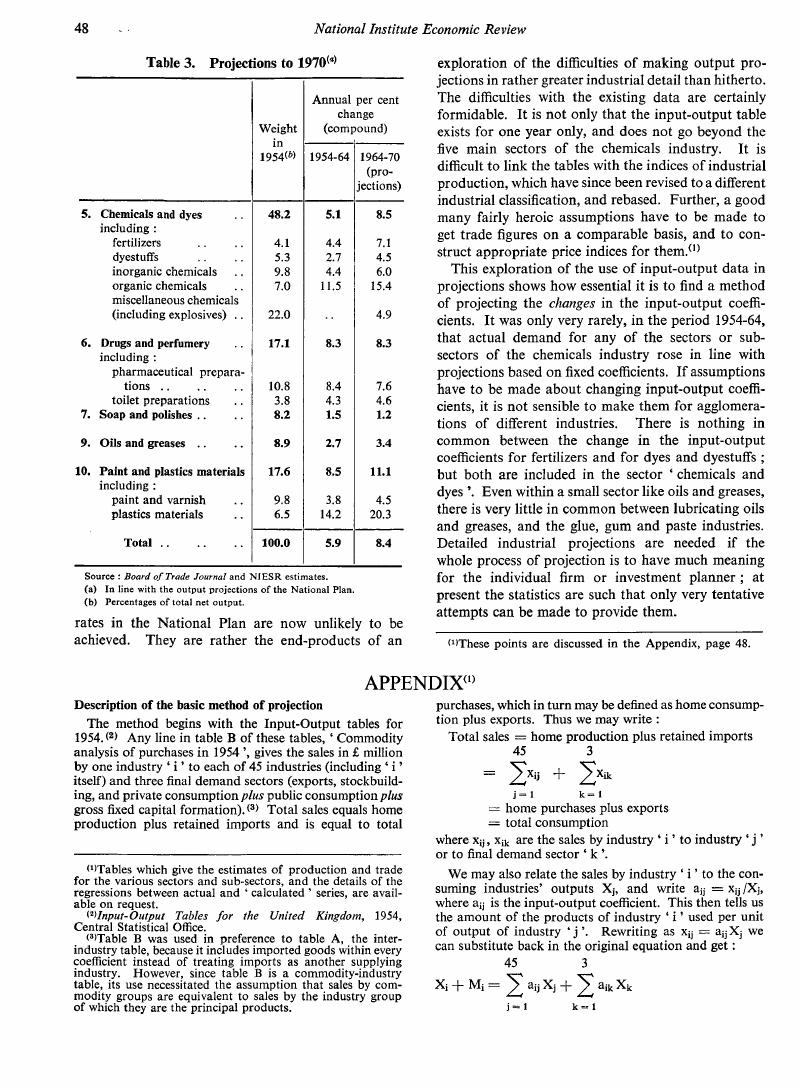No CrossRef data available.
Article contents
Appendix(1)
Published online by Cambridge University Press: 26 March 2020
Abstract

- Type
- Other
- Information
- Copyright
- Copyright © 1966 National Institute of Economic and Social Research
References
Notes
note (1) page 48 These points are discussed in the Appendix page 48.
note (1) page 48 Tables which give the estimates of production and trade for the various sectors and sub-sectors, and the details of the regressions between actual and ‘calculated’ series, are avail able on request.
note (2) page 48 Input-Output Tables for the United Kingdom, 1954, Central Statistical Office.
note (3) page 48 Table B was used in preference to table A, the inter- industry table, because it includes imported goods within every coefficient instead of treating imports as another supplying industry. However, since table B is a commodity-industry table, its use necessitated the assumption that sales by com modity groups are equivalent to sales by the industry group of which they are the principal products.
note (1) page 49 Table 9 of each industry chapter of the Report on the 1954 Census of Production.
note (2) page 49 A simple definition of organic chemicals is that they are compounds of carbon; in practice, adherence to this definition is less than strict. The Board of Trade indices of production called organic chemicals and inorganic chemicals refer normally to chemicals produced by the ton and ought perhaps to follow the normal industrial nomenclature and be termed heavy organic chemicals and heavy inorganic chemicals.


